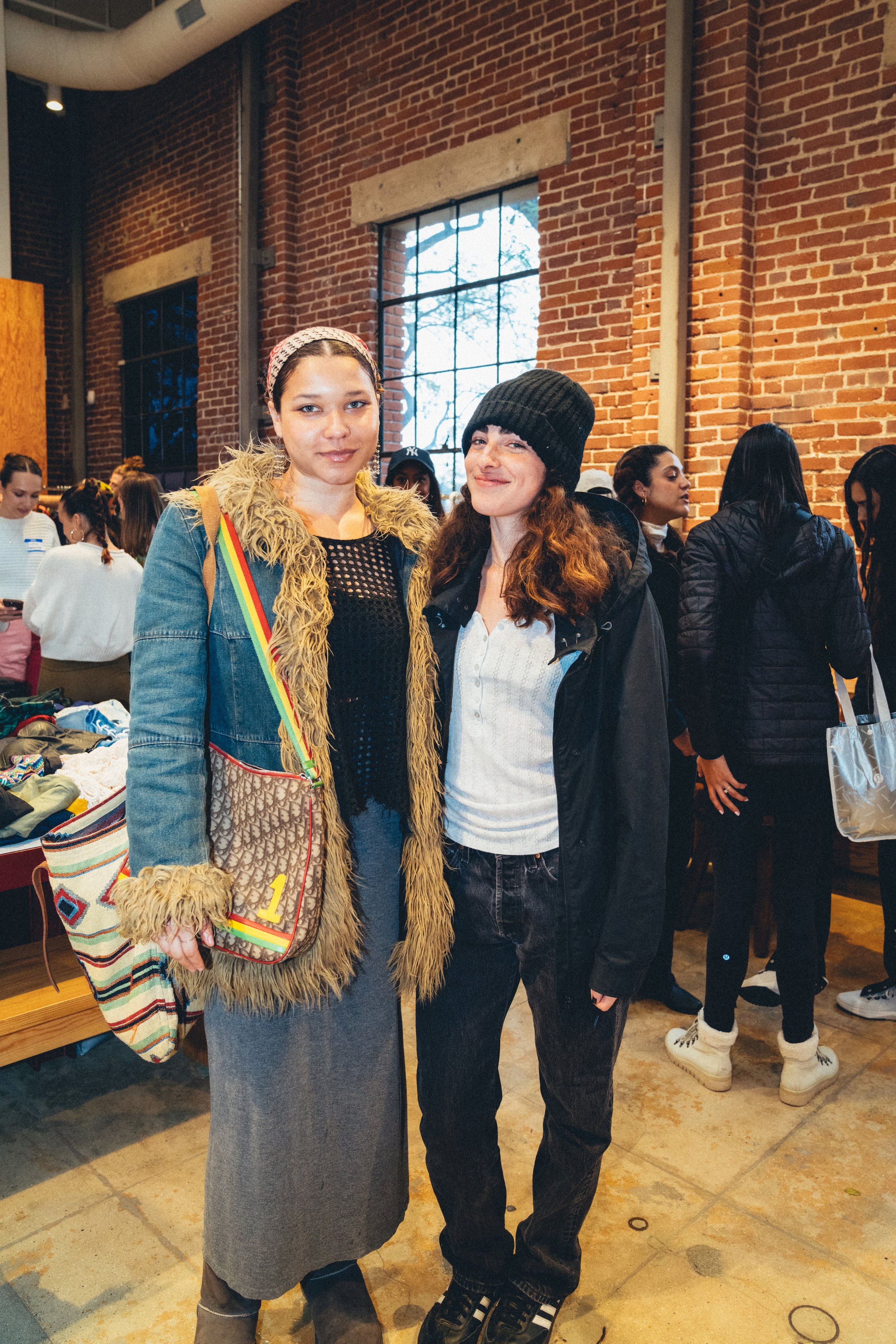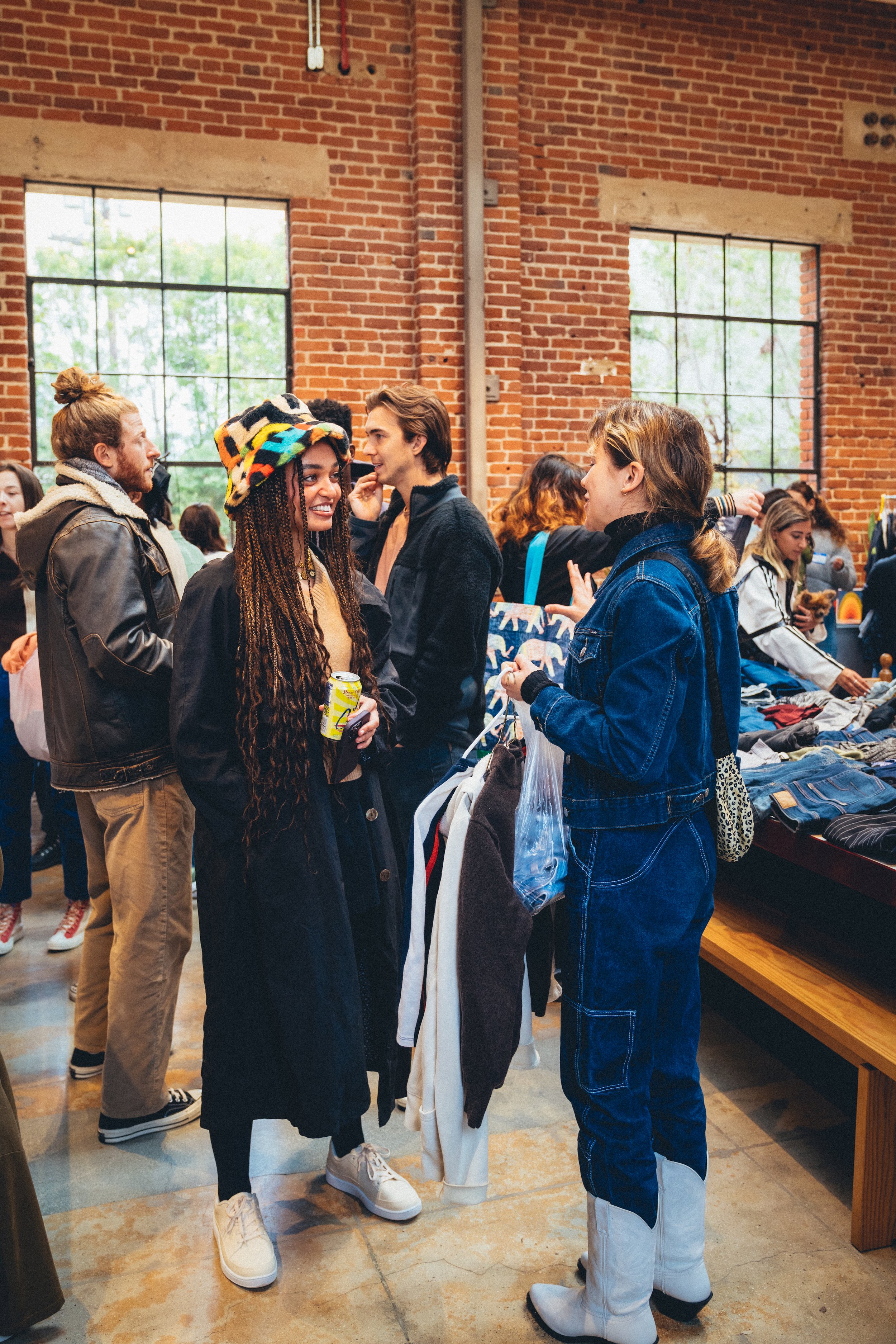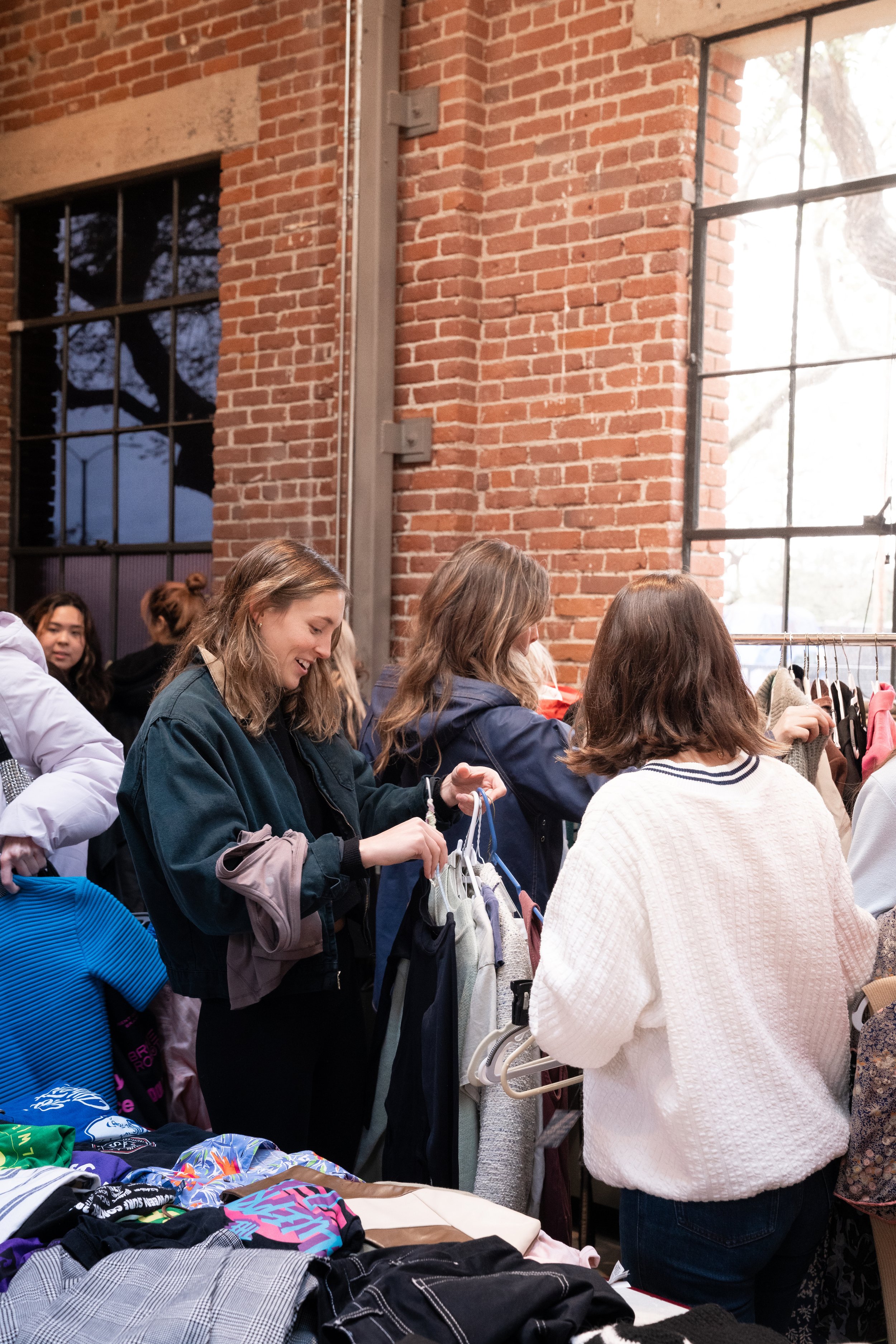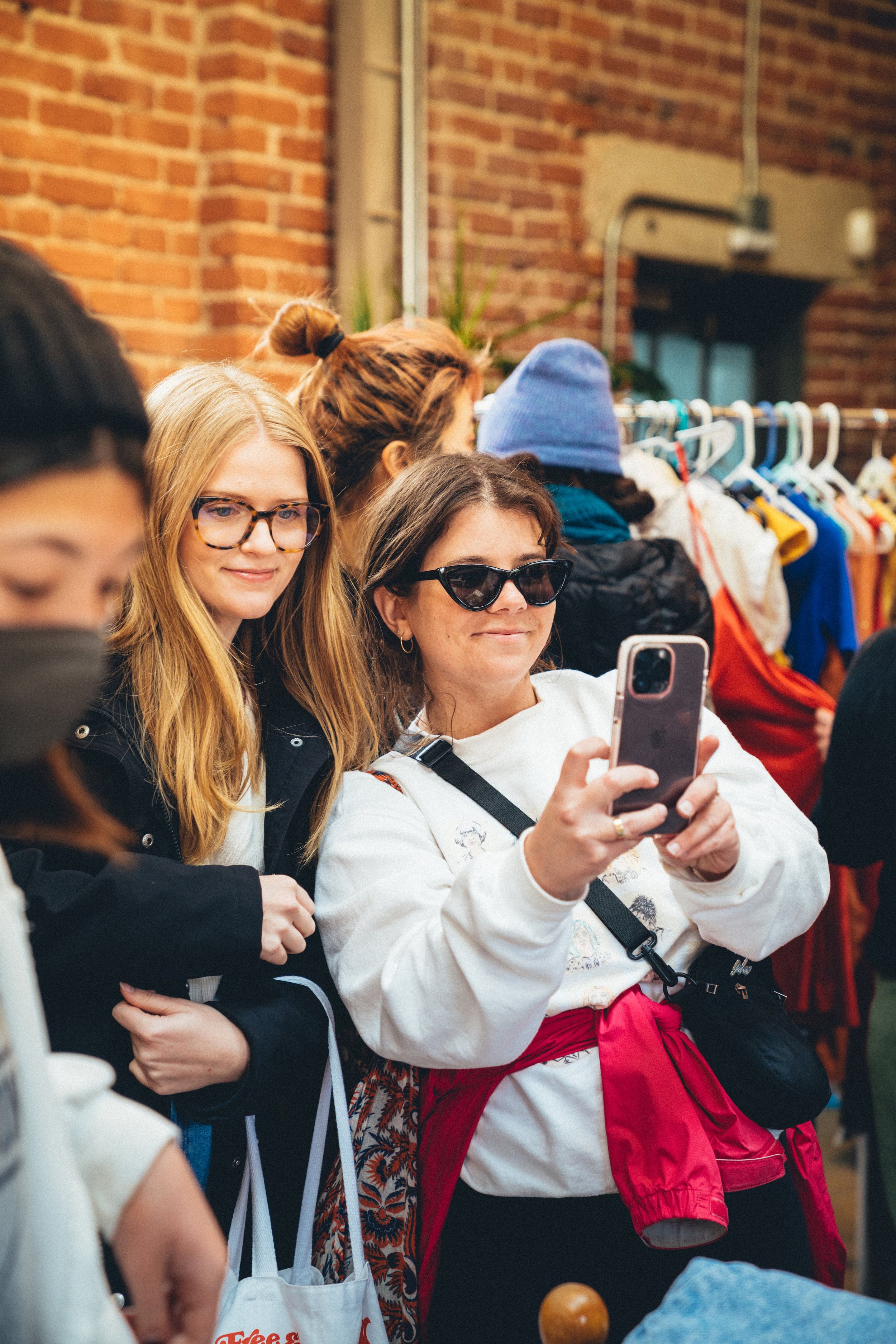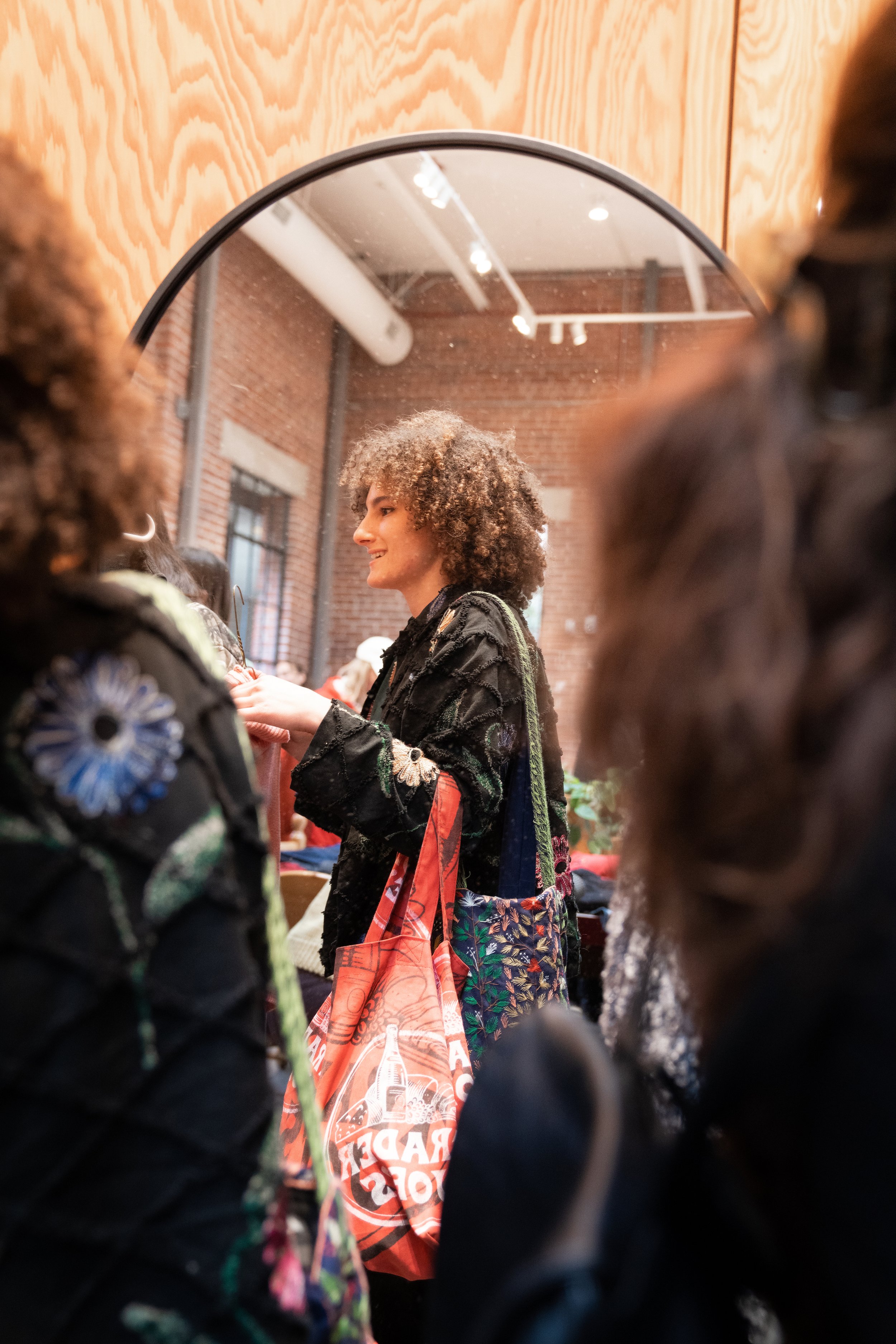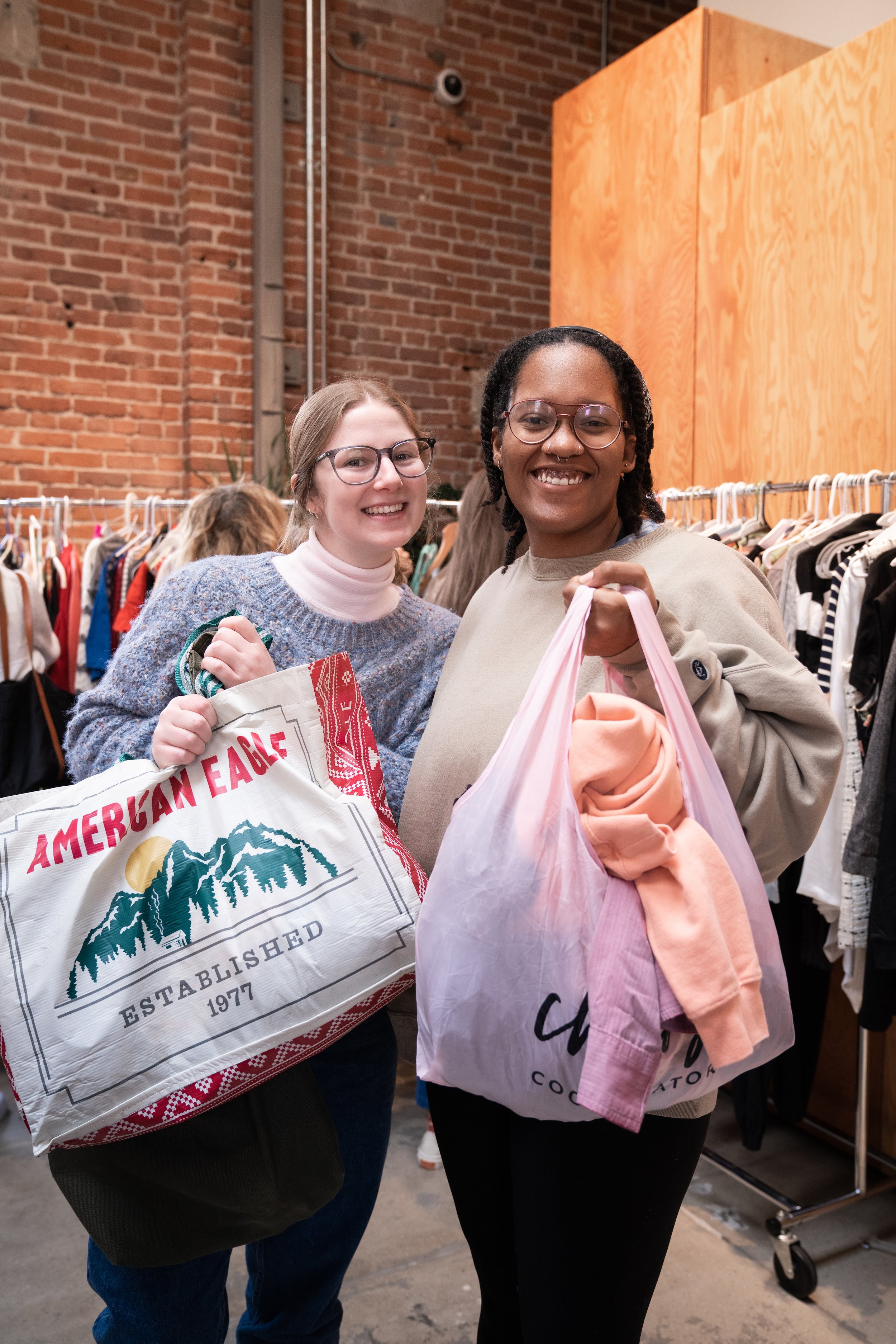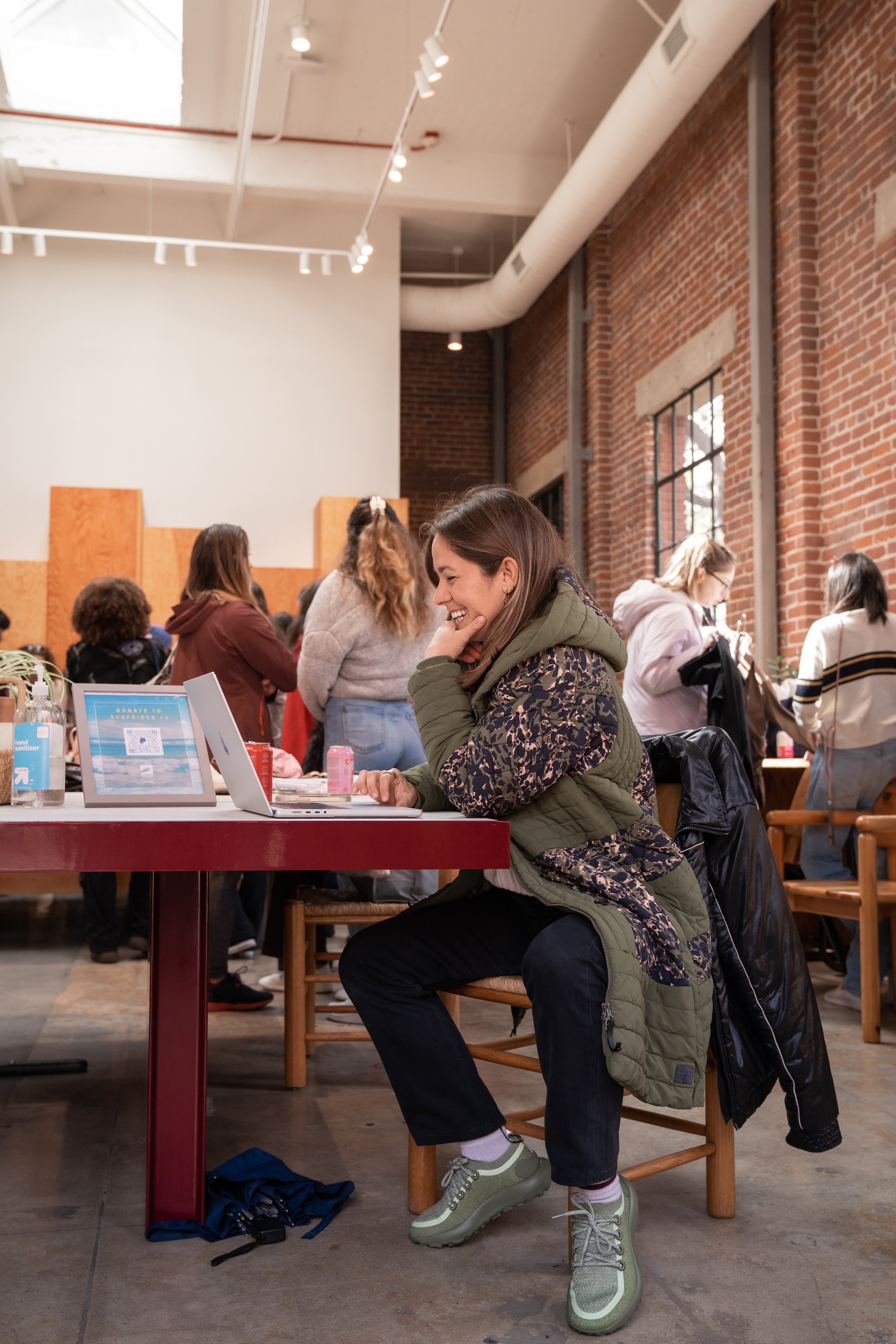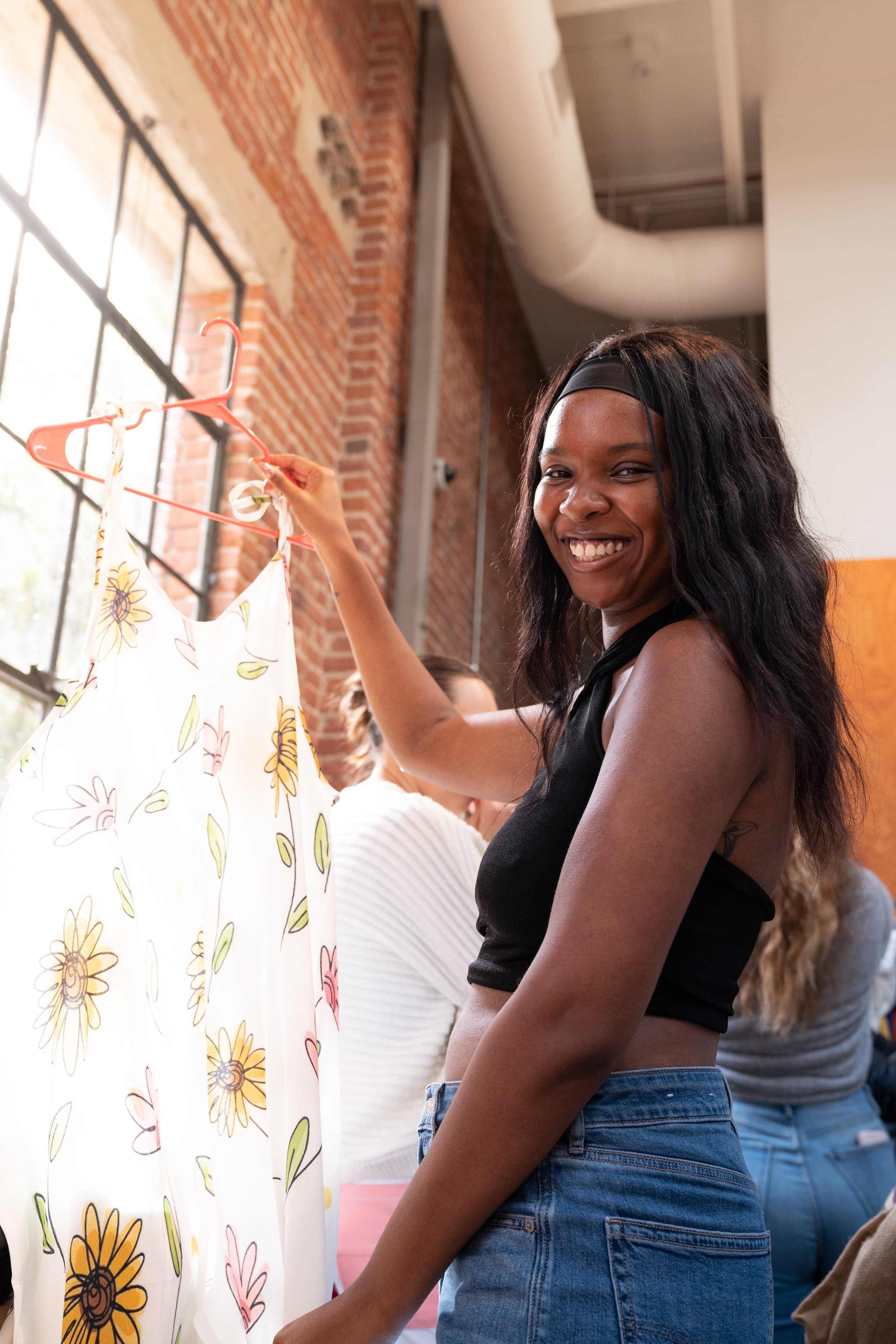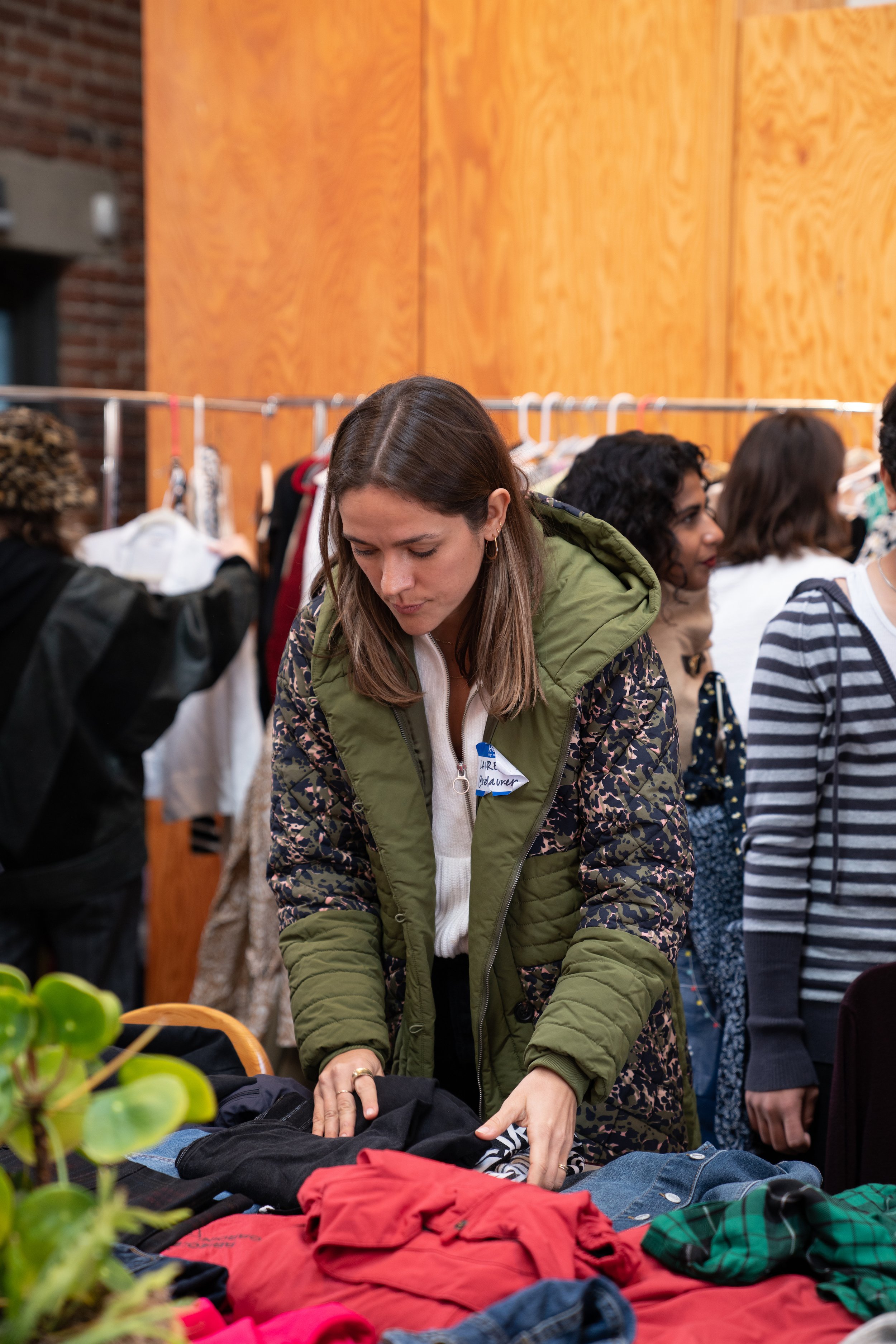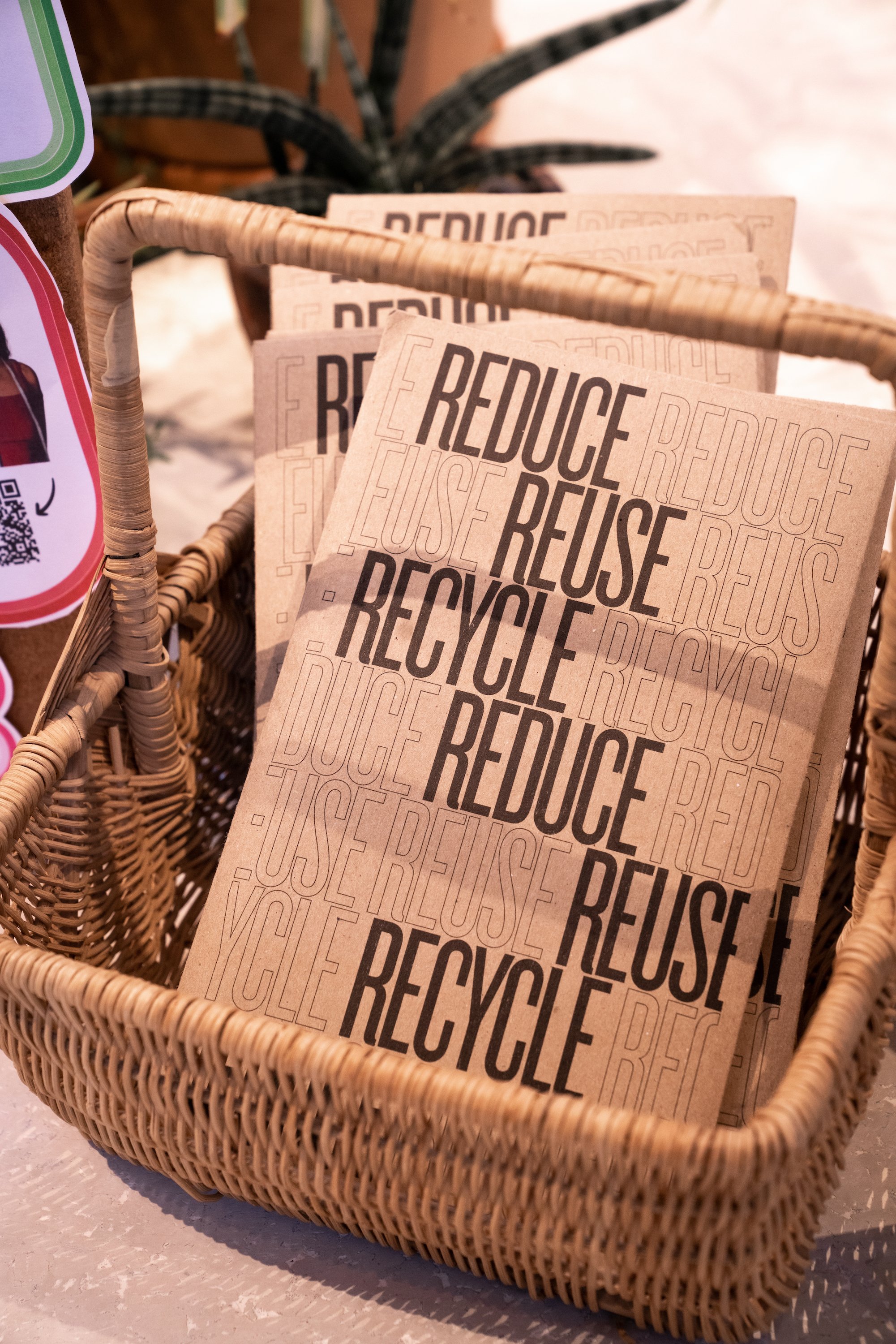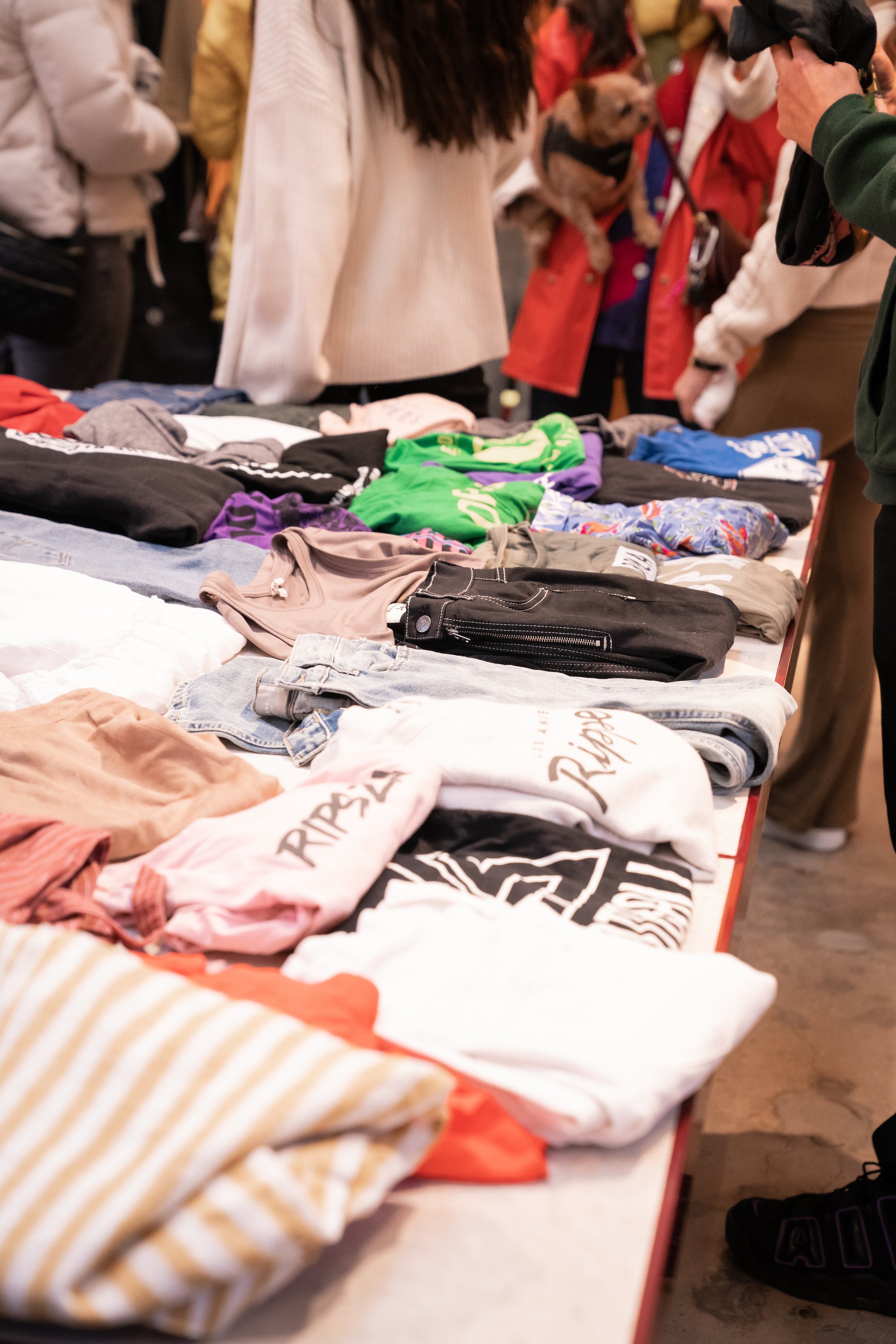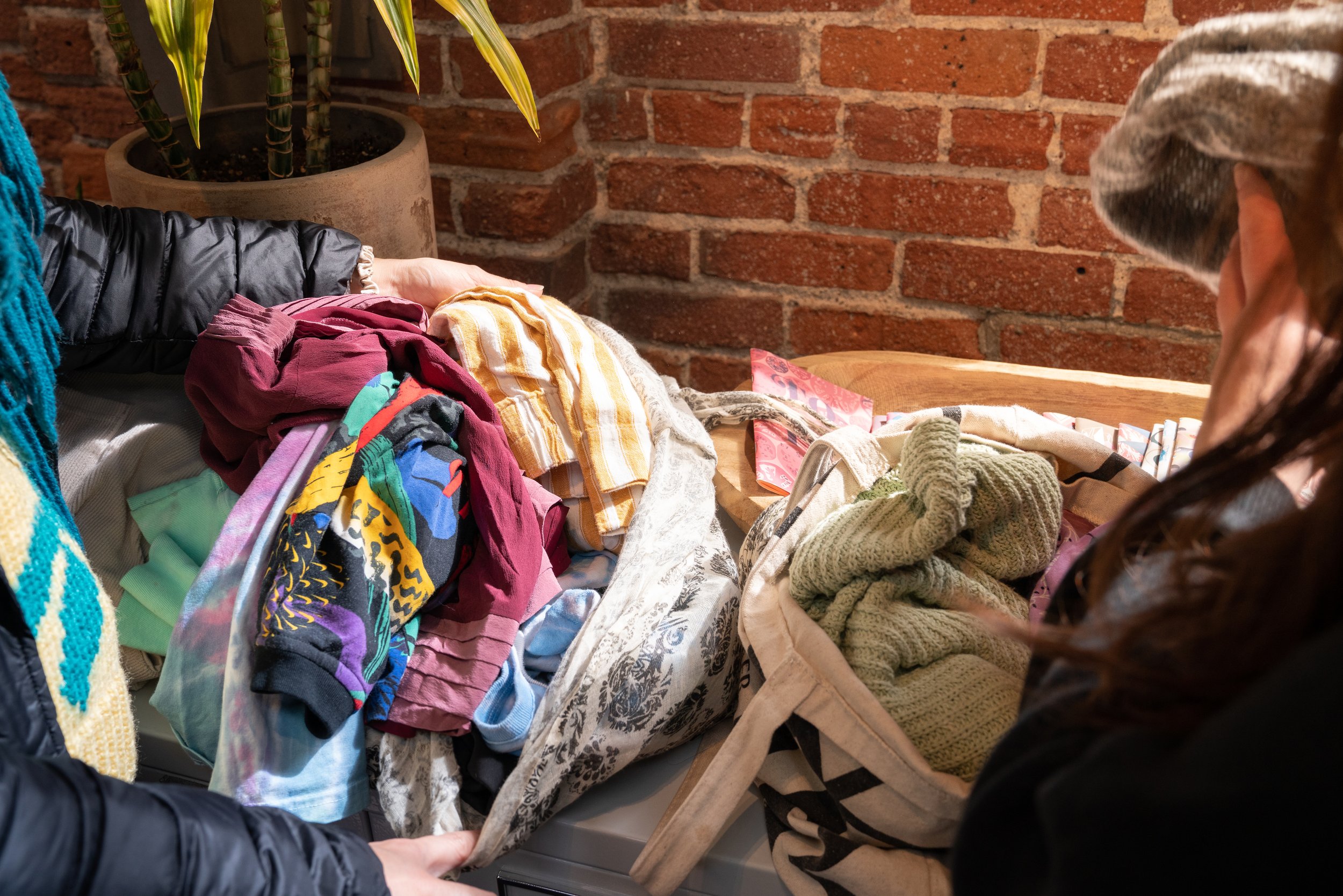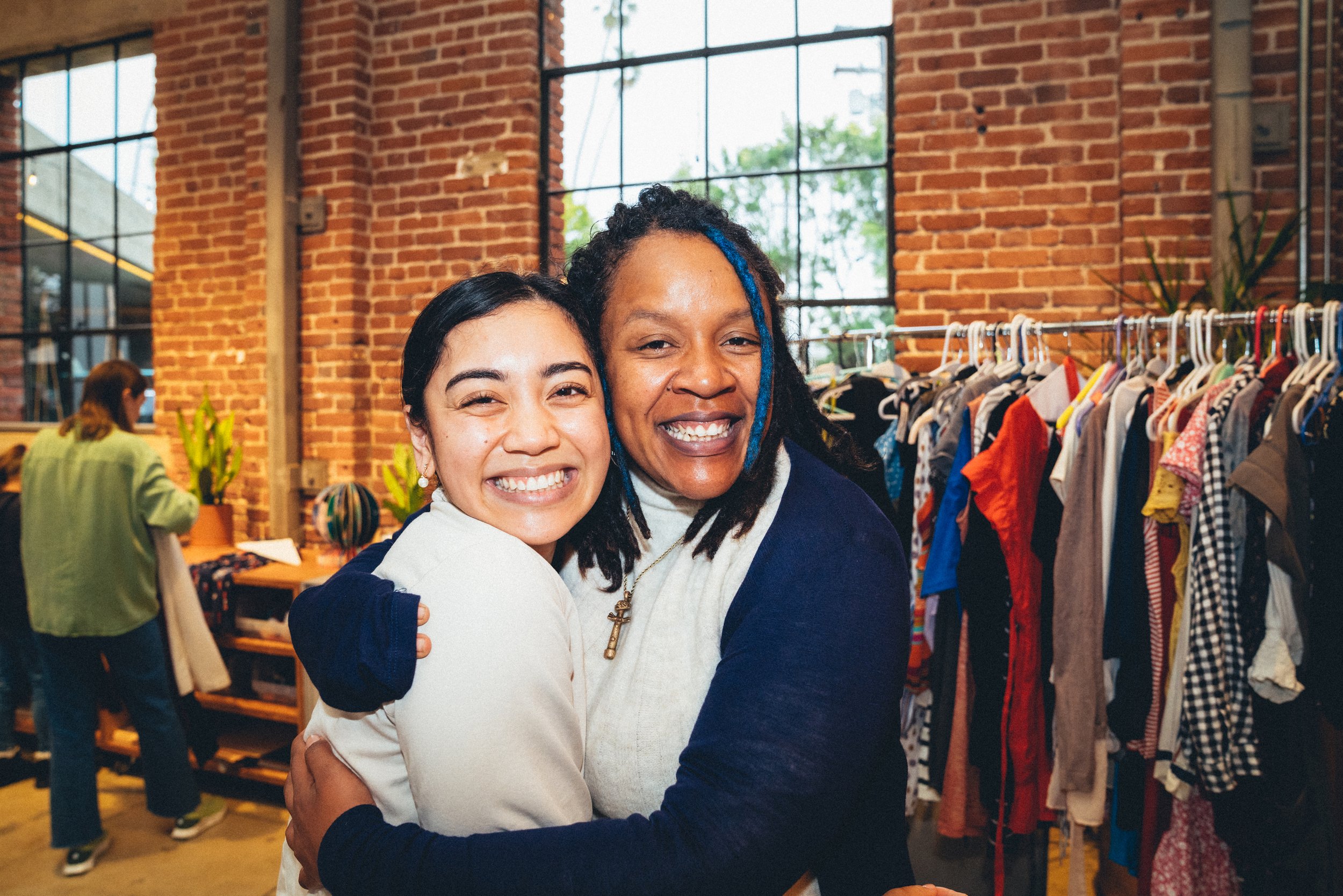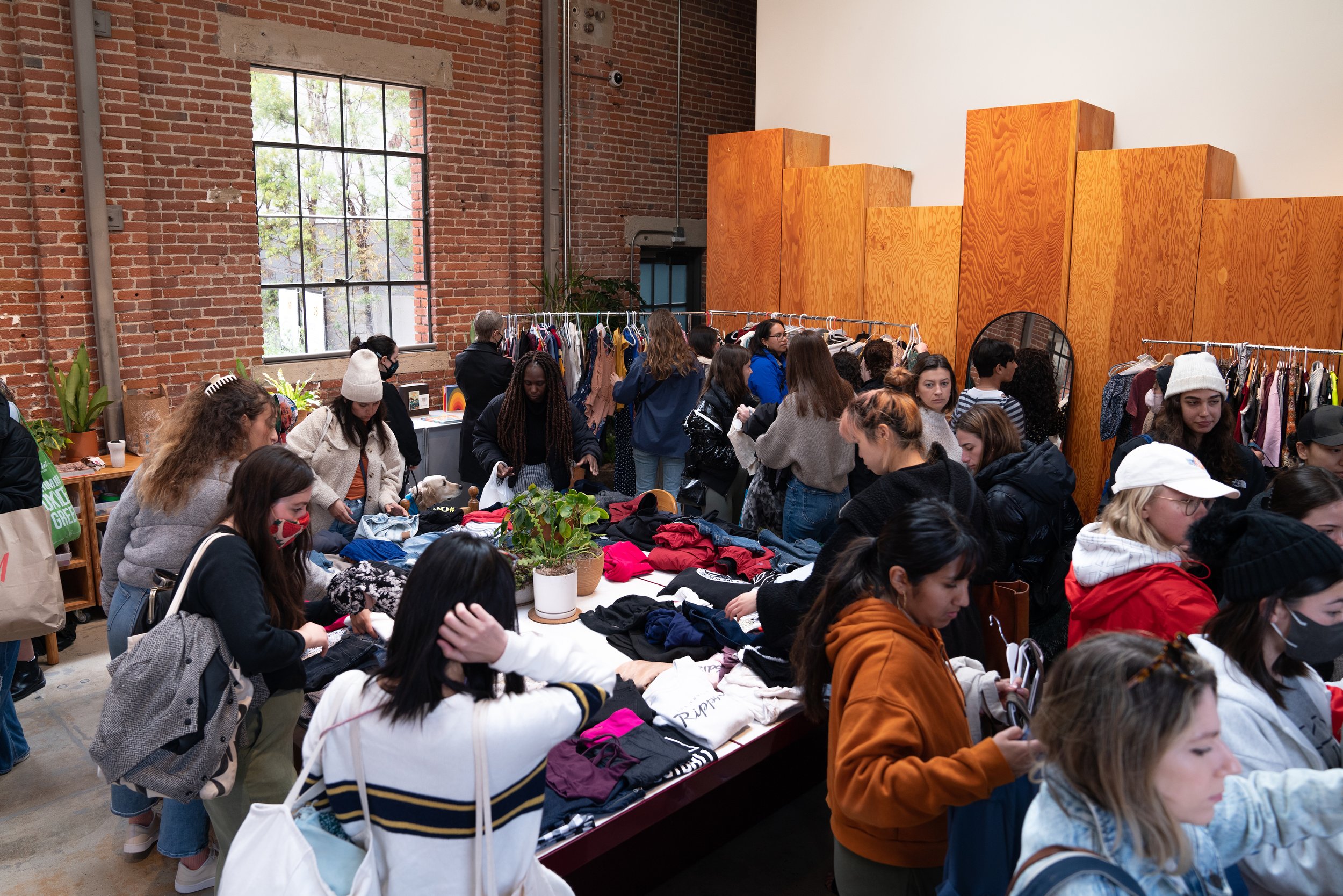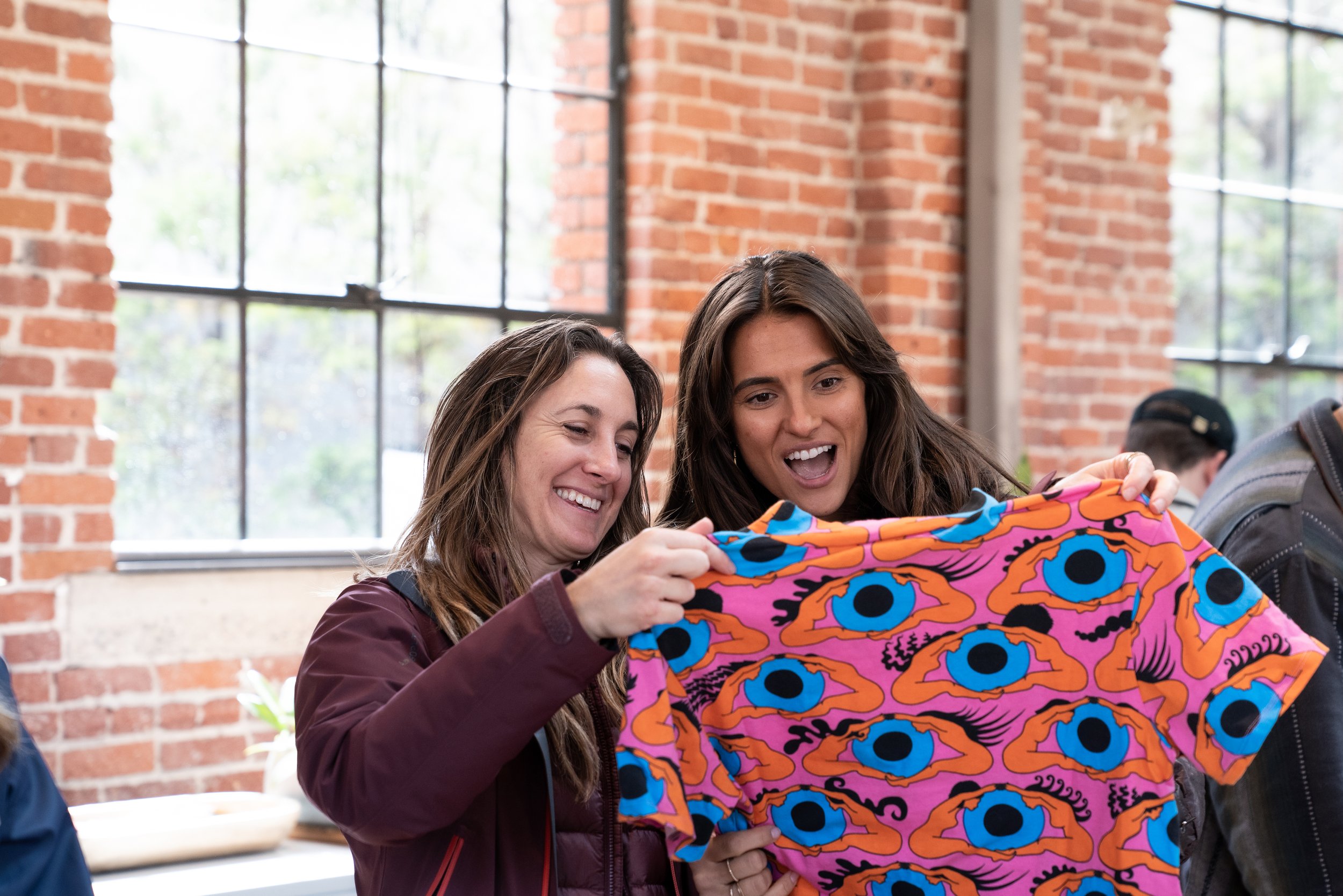How to Host a Clothing Swap
Clothing swaps are an awesome way to promote sustainable & circular fashion practices. By swapping clothes with your friends and other members of your community, you can reduce waste and extend the life of clothing items that might otherwise end up in the trash. This is especially important given the environmental impact of the fashion industry, which is a major contributor to greenhouse gas emissions and water pollution.
Today, in fact, fashion accounts for up to 10% of global carbon dioxide output—more than international flights and shipping combined, according to the United Nations Environment Programme.” - Bloomberg
On top of promoting sustainable practices, clothing swaps also offer a number of benefits for the swappers. They provide an opportunity to refresh your wardrobe without spending money, and to try out new styles without making a long-term commitment! They also encourage a sense of community and connection, as participants share stories and bond over their love of sustainable fashion.
My friends and I hosted a clothing swap in LA on February 25th, 2023, and it was a BLAST. Nearly 300 people RSVPed, and we received 1,225 pieces of clothing. We also donated or recycled about 120 pounds of textiles that would have otherwise ended up in a landfill. Our event was a huge success, and I wanted to share some key learnings with you so you can promote sustainable practices in your own community while also having fun and refreshing your wardrobe. So gather some friends, clean out your closet, and start planning your own swap today!
You ready to host your first clothing swap? Here are some steps to get you started:
Collaborators - Gather some collaborators to join you in hosting the clothing swap event. Co-hosting with friends or partners enables you to divvy up responsibilities and brainstorm creative ideas together.
Event Basics - Decide if you want the event to be big and public, or intimate and private. Who will you invite?
Location - Find a location that is big enough for your group. Start by reaching out to local coffee shops or co-working spaces to see if they have any available event space. Many of these places have rooms or areas that can be reserved for community events. Additionally, check out public parks or community centers in your area. Many parks have designated areas for events and community gatherings, and community centers often have rooms available for rent at a reasonable price. When reaching out, be sure to mention the sustainable aspect of your clothing swap and how it can benefit the local community.
Date - Pick a date or coordinate a time with your venue. Our swap was on a Saturday to accomodate work schedules, and we held it from 12-4pm which was PLENTY of time!
Event Invitation - Create an invite and messaging. We recommend using Canva.
RSVP Link - If you're planning a big event, it's always a great idea to make an RSVP list. This way, you can have a good estimate of how many people to expect. We found that using a Google Form worked best for us. Don't forget to ask for attendees' email addresses so you can keep them updated with any changes (like parking or a Plan B for bad weather), as well as keep them in the loop for future events. You might also want to ask how many clothing items each person plans to bring so you can better prepare. For our event, we set a maximum of 10 pieces per person to avoid having too many leftovers.
Prizes - You may want to consider having a raffle or giveaway at the event. It's a great way to incentivize people to come and swap clothes. You might want to consider reaching out to some of your favorite sustainable brands for gift cards to give away to attendees. We did this at a previous swap and it was a huge hit!
Donations & Recycling - Prepare for leftover clothing. To find places to donate, you can get in touch with local shelters, centers, or organizations. Make sure to give them a call in advance and ask if they are currently accepting donations and what items they need. We also suggest using the Take Back Bag from For Days for textile recycling. It makes sure that these clothes don’t end up in a landfill!
Event Supplies - Prepare for the event with these supplies:
Racks: Try asking around in your community if anyone has racks you can borrow, or you can search to see if you can rent some in your community.
Tables: Folding tables are great for placing bottoms, shoes, and accessories on.
Hangers: You will need lots of hangers. We had each of our hosts bring 10-20 hangers, and we purchased some to use for the next swap. You can also rent hangers online or check your local Buy Nothing Group to see if anyone is giving them away.
Mirror: So swappers can see what the clothes look like on.
Speaker: To play music or make announcements.
Laptop: To check everyone in and mark how many items they are bringing in/taking home.
Canned drinks, cooler, and ice: Always nice to offer someone a cold beverage while they swap!
Hand sanitizer
Recycle bin: For the cans.
Trash bags: To sort the leftovers to be donated and recycled.
Setting Up - When it comes to the day of the event, make sure to give yourself about an hour to set everything up. Start by setting out your clothes as an example for the next swappers to know where things go. Then create a flow that feels natural and provides enough space for swappers to check racks and tables.
It’s Show Time! As you greet swappers, kindly direct them to the designated area to hang and fold their clothes. Please remind them to keep the area tidy for everyone's enjoyment. Inform them of the nearest bathroom and if it's possible to try clothes on there. We also offer beverages, so feel free to offer one and let them know where the recycle bin is located. Lastly, please remind them to check-out with you before leaving, so we can keep track of the number of items that came in and out.
We wish you luck in hosting your first clothing swap! Thank you for joining us in celebrating sustainable and circular fashion, and for taking steps towards reducing waste in the fashion industry. Remember, every small action can make a big impact!

